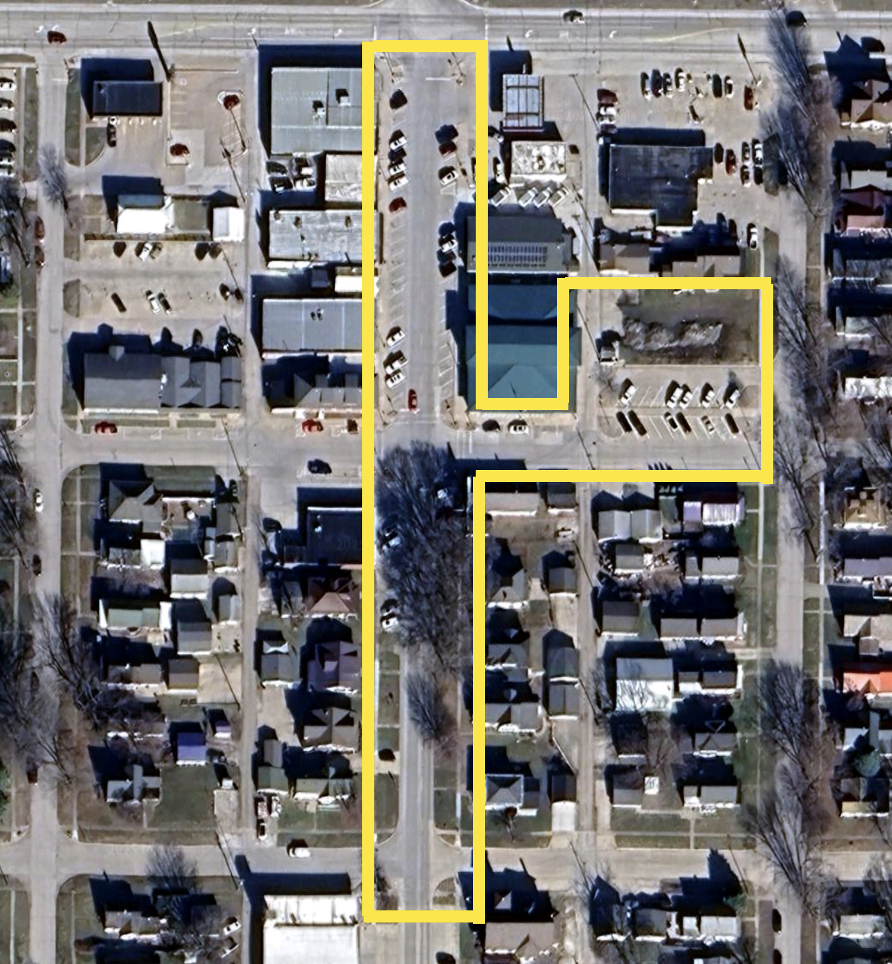West Burlington - Downtown Streetscaping
The City of West Burlington sought an evaluation and redesign of its downtown area to enhance functionality and visual appeal, facilitate public events, attract visitors. For their capstone project, a group of Civil and Environmental Engineering students designed multiple components for the downtown area, including green medians, permeable paved roadways, covered parking, a pedestrian walkway, and reconfigured parking.
The current downtown area of West Burlington is heavily dominated by concrete, lacking the warmth and visual appeal necessary to foster an inviting public space. The student team worked to create a more pedestrian-friendly and aesthetically pleasing environment while enhancing stormwater management.
The proposed redesign introduces several transformative features to improve the area's appeal and functionality. Five grassy medians will be installed—three along Broadway Street and two along Wheeler Street, which introduce greenery to the streetscape and provide stormwater management. The vacant lot east of City Hall will be transformed into a public space; it includes a parking overhang with solar panels and a multi-use gathering structure for the farmer's market and other events. A small building will be constructed to provide essential amenities, including bathrooms and storage space. A new crosswalk will be placed along Broadway Street midway between Mt. Pleasant Street and Wheeler Street to improve walkability and provide safer crossings. Additionally, back-in parking striping will be introduced, improving spatial efficiency and increasing safety for both drivers and pedestrians. The project also features a movable wooden patio for Broadway Bar & Grill that overhangs the on-street parking, allowing seasonal flexibility by extending seating into the parking area during warmer months and being removed during the winter. Finally, the design incorporates permeable pavement at the Broadway-Wheeler intersection and designated parking areas. This solution improves drainage, reduces runoff, and contributes to the overall sustainability of the downtown area.
